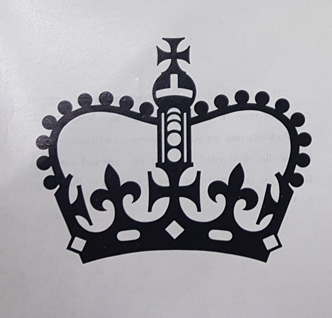Here we round off a three-part story of how the investiture of Prince Charles as Prince of Wales in the summer of 1969 was secured.
The Security Service (‘Box 500’ for short) commented on February 26 on the Ministry of Works’s proposed patrol orders and duty roster. ‘Box 500′ recommended a patrol clock, and four or more clocking points, and an average of two patrols an hour (‘once an hour is not really good enough’). Also suggested was a drill, agreed with police, in case of a hoax telephone call, ‘which may or may not be intended to distract their attention’. That said, Caernarvon Castle telephone numbers would not be in the public directory.
As early as December 1968, the Welsh Language Society announced that it would demonstrate on March 1, 1969, against Charles’ investiture, outside Caernarvon Castle. Another example of Security Service interest in the work was their passing on from the police to the Ministry in March 1969 the name of a guard dog company, in Rhyl; the Ministry decided against hiring them.
That same month, the Ministry fitted patrol clocks inside the castle, where they could not be seen from outside. The Ministry ordered an intruder alarm with a bell for the Wicket Door of King’s Gate.
On St David’s Day, an estimated 3500 including 1000 Welsh nationalists, demonstrated below the castle. The nationalists also objected that Prince Charles was due to have a term at University College, Aberystwyth. A workman reportedly took a red dragon flag from a demonstrator and put it on top of the builders’ lift. The scaffolding company told the Ministry that it believed that the man ‘is now no longer employed’ by SGB, the scaffolding company. The authorities reminded managers and contractors of the need for control over their men.
The BBC was due to arrive on Sunday, June 15 with vehicles to bring cabling, and carry out the cable rigging in a week. Ten television cameras would arrive on June 22.
In April, the Security Service advised on deadlocks for doors, and specified doors to the spectator stands; and a minimum number of keys. By mid-May, there were three rehearsals in the grounds of Buckingham Palace. Details came nearer the time, such as; where to secure the regalia? A safe? Not needed; a six foot by three security cupboard was enough.
Police and military would have a joint control room in the Black Tower on the day, and about a dozen RAF men would control the RAF fly-past from the top of the Tower.
The press would view from two galleries. Stewards would collect the journalists’ copy ten times between 11am and 3.45pm, taken in a bag to the television compound, handed to a ATV messenger, with a lapel badge saying ‘press messenger’, to pass the bag of envelopes of copy to a press agent. Likewise stewards would collect photographic film five times between 10.30am, and 1pm. At that time came the procession. Charles would arrive about 2.40pm, and the Queen at 2.55pm. The world’s TV broadcasters would have more times to send away film, but it was controlled, because movement during the ceremony would be ‘strictly limited’. The royal train would leave the town at 5pm.
Quite apart from the royals, the authorities had dignitaries to protect. The Prime Minister, then Harold Wilson, and party, would arrive in three cars. The PM’s car had to be a Humber Hawk. Other government ministers would be there. The file lists four local garages, in case of break-downs. In the event, there were no break-downs.
By this time, an office for the investiture was running, with its own notepaper, at 27 Northumberland Avenue in WC2. The actual ceremony went ahead at 3pm on July 1, 1969.
Image; a label to put on the top centre of your windscreen; it entitled you to enter the guests’ car park (‘guests are reminded that they should be in their seats by 1pm’). From the National Archives file WORK 21/147.










